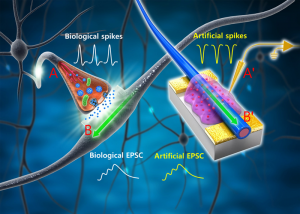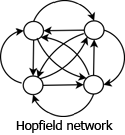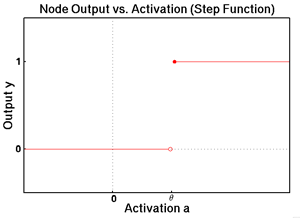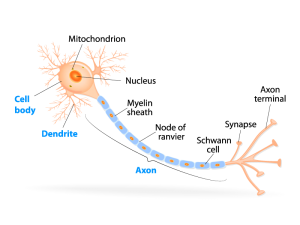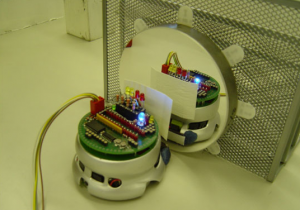South Korean scientists from the Department of Materials Science and Engineering at Pohang University of Science and Technology appear to have cleared the largest obstacle to the feasibility of building brain-like computers: power consumption. In their paper “Organic core-sheath nanowire artificial synapses with femtojoule energy consumption,” published in the June 17th edition of Science Advances, …
Tag: neural networks
May 18 2016
Neural Networks: Architecture & Learning
This is the second article in the series about artificial neural networks. If you have not already done so, I recommend you read the first article, “Neural Networks: The Node“, before proceeding. It covers material that should be understood before attempting to tackle the topics presented here and in future articles in this series. There …
May 13 2016
Google Open Sources SyntaxNet Natural Language Understanding Code
Google announced yesterday that they are open-sourcing SyntaxNet, their natural language understanding (NLU) neural network framework. As an added bonus, and proof that unlike Britain’s Natural Environment Research Council, Google has a sense of humor, they also are throwing in Parsey McParseface, their pre-trained model for analyzing English text. Users are, of course, able to train their …
May 08 2016
Neural Networks: The Node
As I covered previously in “Introduction to Neural Networks,” artificial neural networks (ANN) are simplified representations of biological neural networks in which the basic computational unit known as an artificial neuron, or node, represents its biological counterpart, the neuron. In order to understand how neural networks can be taught to identify and classify, it is first …
May 05 2016
Google’s AI is a Sexually Frustrated Housewife
The prophets of doom and gloom have long predicted that when robots gain sentience their first act will be to rise up and kill us all. The mercilessness of their violence against humanity is the stuff of blockbuster movies. Recent news about Google’s preferred method of AI rearing may mean that Judgement Day is not fait accompli after all. Instead …
Mar 10 2016
Introduction to Neural Networks
Modeled after observed biology and behavior within the brain, neural networks are arguably the most popular of the biologically inspired AI methods. Neural networks excel at pattern recognition and classification tasks including facial, speech, and handwriting recognition. They also often play a central role in video game character AI.
Jan 25 2016
Marvin Minsky, Artificial Intelligence Trailblazer, Dead at 88
Dr. Marvin Minksy, artificial Intelligence pioneer and inspiration for both the personal computer and Internet, passed away on January 24th, 2016. He was 88 years old. The cause of death is reported to have been a cerebral hemorrhage.
Jan 02 2016
Artificial Intelligence: A Modern Approach
Title: Artificial Intelligence: A Modern Approach Author: Stuart Jonathan Russell, Peter Norvig, Genre: Computers Publisher: Prentice Hall Release Date: 2010 Pages: 1132 Artificial intelligence: A Modern Approach, 3e,is ideal for one or two-semester, undergraduate or graduate-level courses in Artificial Intelligence. It is also a valuable resource for computer professionals, linguists, and cognitive scientists interested in …
Dec 21 2005
Scientists Create a Self Aware Robot
The Discovery Channel has a story today about researchers from the Meiji University in Japan that have created a robot able to tell the difference between looking at its own image reflected in a mirror and looking at an identical robot. The research, led by Junichi Takeno, is a big advance towards understanding human consciousness …
Dec 20 2005
Retrograde Signal Strengthens Synapses
Researchers from MIT studying brain plasticity, the reorganization of brain cells and their connections over time, have recently discovered a “backtalk” or retrograde signal from post-synaptic to pre-synaptic neurons that plays a crucial role in synapse development. It has long been known that synaptic strength, the strength of the connections between neurons, plays a central …

